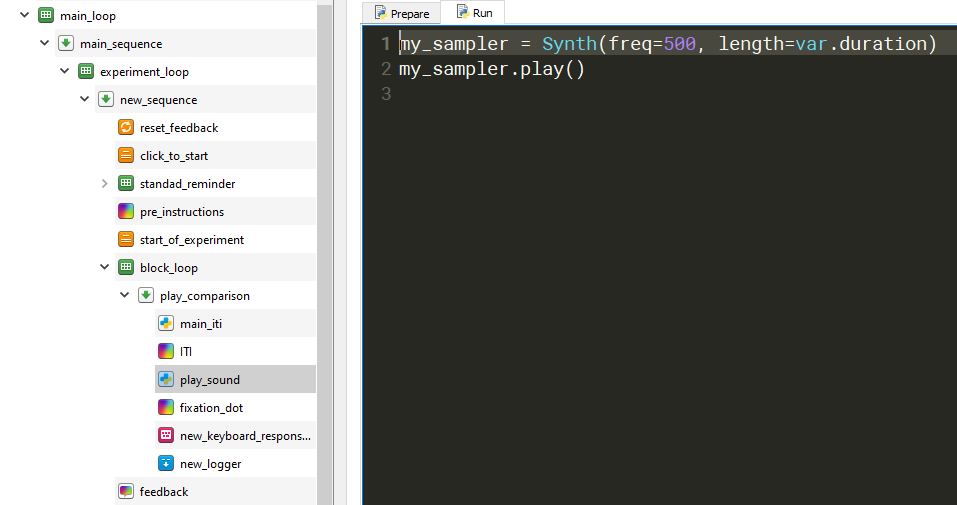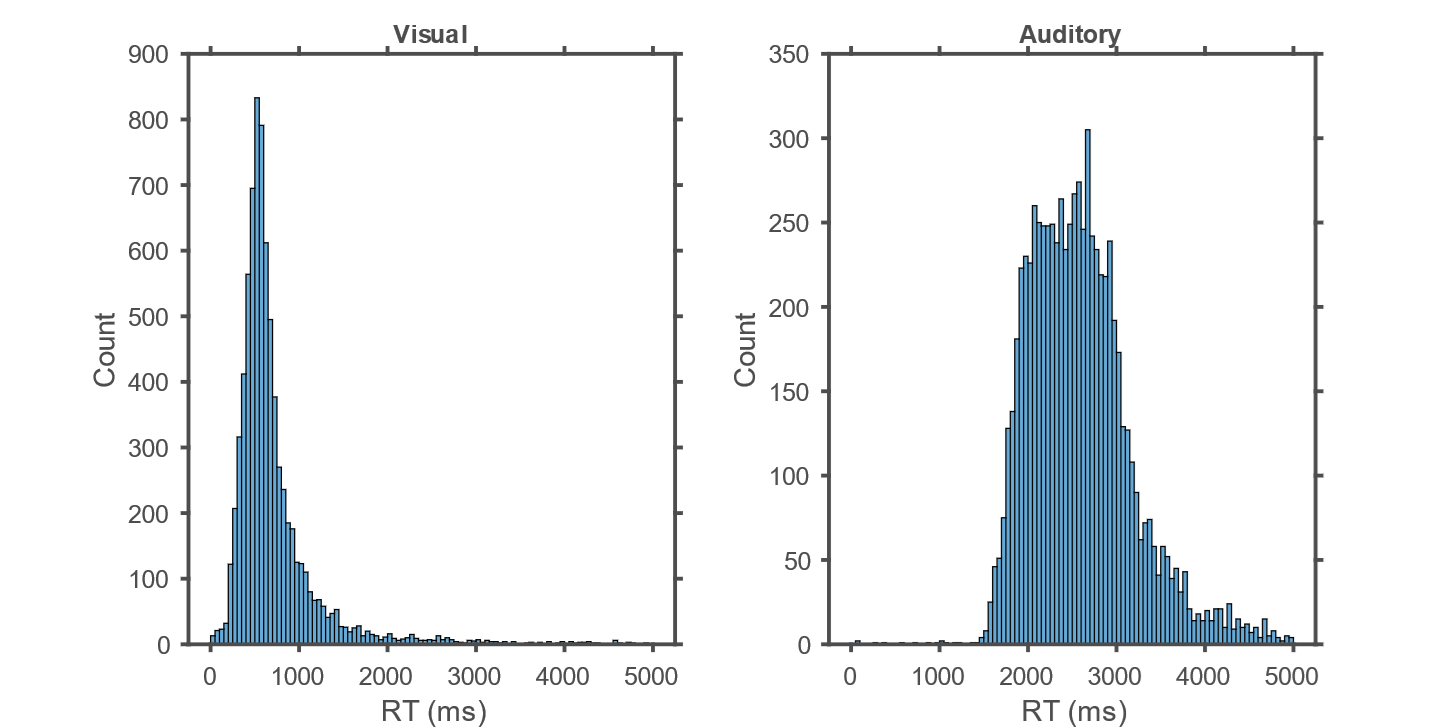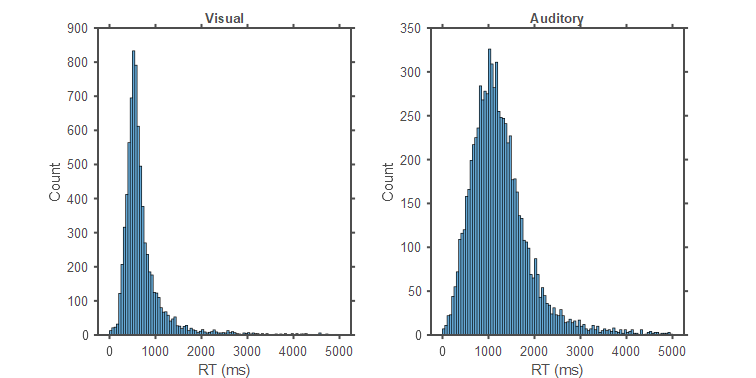Response times in auditory experiment
Hi,
First, I wanted to thank you for creating and maintaining this great tool!
We ran a temporal generalization experiment, which is a 1IFC task where participants are presented with a stimulus for a given duration, and they need to say whether the duration is equal or different compared to a standard they are taught at the beginning of the experiment. Participants did the same task with auditory and visual stimuli, and we wanted to take a look at their response times. The RTs in the visual part make sense, but for the auditory part I'm not so sure. This is how I wrote that bit of the experiment for the auditory task (RTs are logged from new_keyboard_response):
In the visual version, play_sound is replaced by a bit that presents a visual stimulus. Here are the histograms for both modalities (pooled across participants):
In the visual case, RTs are measured relative to fixation_dot onset. Can you help me understand with respect to what RTs in the auditory case are measured? Is time=0 the beginning of a trial? Subtracting the ITI and sound duration per trial does shift the distribution to more reasonable values, but the variability is still much larger than I expected it to be:
Is the larger variability due to random latency until the sound is played? And is it possible to correct the timing of the responses post-hoc?
Any help would be greatly appreciated!
Nir





Comments
Hi @nirof,
Buffering delays might introduce variability, which is why the "prepare-run" strategy exists (The prepare-run strategy // OpenSesame documentation).
For how RTs are measured, you might find this discussion helpful: Using time variables to show how response time is calculated? — Forum
Would you be able to share your experiment file? That way, I can take a closer look.
Thanks,
Claire
Check out SigmundAI.eu for our OpenSesame AI assistant! 🤖
Thanks Claire!
Yes, I figured out the prepare-run thing a bit too late for this specific experiment...
Here's my code:
Thanks again for your time,
Nir
Hi @nirof,
I checked your experiment file and noticed that your logger only included five variables: ITI, correct, response, response_time, and duration (without "automatically log all variables" enabled). If that’s the case, key timing variables weren’t recorded, making it difficult to adjust RTs post-hoc.
Without additional trial-specific timing info (e.g., stimulus, keyboard and fix screen onset times), there’s unfortunately not much to work with. For future experiments, I’d recommend logging all variables and using the "prepare and run" strategy to ensure precise timing.
Sorry I couldn't be more helpful this time!
Claire
Check out SigmundAI.eu for our OpenSesame AI assistant! 🤖
Unfortunately we only recorded these variables. Thank you very much for the help!